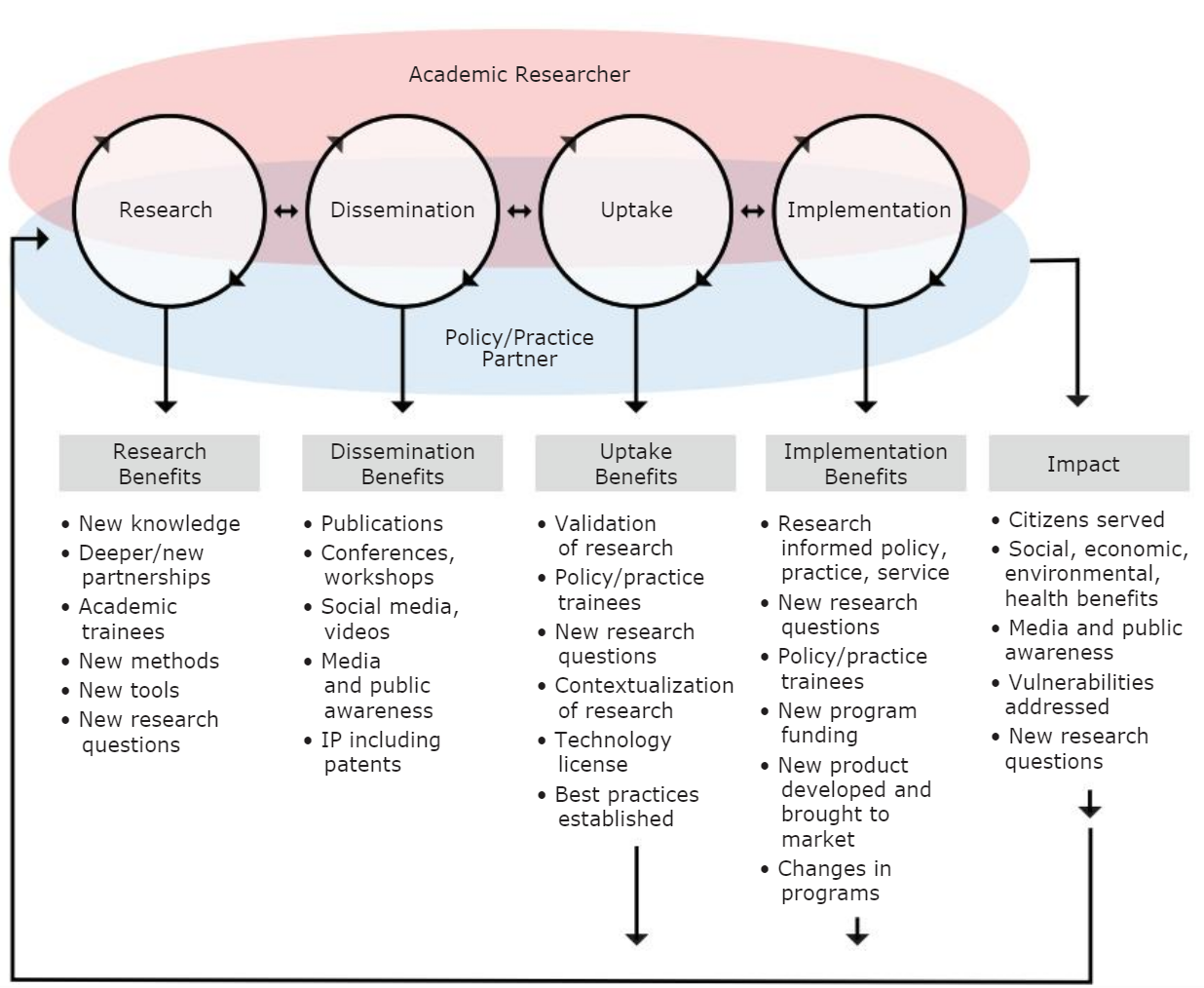11 Introduction to Knowledge Management and Communications | Models and Frameworks 3
Co-Produced Pathway to Impact
The Knowledge to Action cycle, and other linear models of knowledge mobilization, are useful ways of thinking about the process of knowledge production and knowledge use. However, in the case of integrated knowledge mobilization, they may not accurately represent some of the complexity and interplay between research producers and research users at all stages of the research process. For this reason, David Phipps and colleagues developed the Co-Produced Pathway to Impact7 – a model that illustrates the feedback loops between researchers and partners at all stages of the research process.
This model builds on previous logic models in the field, outlining the activities and benefits of interaction at each of four stages:
- Research: The activities encompassed in research production, which may be completed by the researcher, the partner, or collaboratively.
- Dissemination: Activities to share research, including written, online and in-person dissemination mechanisms.
- Uptake: After dissemination, an organization will share research information internally and determine its utility and potential use.
- Implementation: The research may be used to inform products, policies and services within or beyond the organization.
- Impact: This is the result that implementation may have; it can include environmental, economic, health or societal impacts, among others.
The model recognizes that at each stage, activities will be completed by the researchers and partners independently, but some activities will also be completed collaboratively; it also recognizes the iterative and cyclical nature of this process.

Benefits of Knowledge Mobilization
Although knowledge mobilization can take time, it is very important that researchers have a knowledge mobilization plan in order to identify and facilitate impact beyond academia. Knowledge mobilization can have a number of benefits, including:
- Increased relevance of research to user concerns
- Improved trust and strengthened relationships between researchers and end users
- Clear communication and better understanding of research results
- Changes in knowledge, attitudes or behaviour
- Impacts on social, environmental, economic or health outcomes
 Deeper Dive
Deeper DiveRead CIHR – Guide to KT Planning at CIHR: Integrated and End-of-grant Approaches
Lost in Knowledge Translation: Time for a Map?
Co-Produced Pathway to Impact

